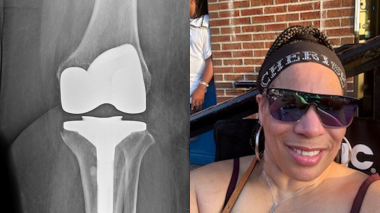Achilles tendonitis, plantar fasciitis and stress fractures are three of the most common overuse injuries that plague runners. But not to worry. There are ways to lower your risk for injury without sacrificing intensity.
Christina Vorobej, MD, with Carolinas HealthCare System’s Sports Medicine & Injury Care shares some helpful injury-prevention tips:Prevention
Don’t run more than 40 miles a week. “The risk for overuse injuries goes up dramatically if you’re running more than 40 miles a week,” says Dr. Vorobej. Don’t forget to cross train. The 40-mile rule is strictly related to running, so if you want more cardio, grab your bike or your swimming cap instead. Moderate change. Don’t change more than one aspect of your training at once. Pick either intensity, surface or distance, for example, as a way to amp up your routine. But don’t try to change them all at the same time. Replace your shoes. Invest in a new pair of running shoes before your old ones wear completely out and don’t wait until too close to race day. “You want to change them every 300 to 400 miles,” Dr. Vorobej says. “And you want to give yourself a good month or so to wear them in.” Don’t forget to stretch. Dr. Vorobej recommends incorporating stretching into your routine at least three times a week. “Regular stretching is very important,” she says. “And it’s more effective to stretch after you’re warm, so after exercise.” Work on your six pack. Make sure you’re keeping your whole body strong with a focus on your core. This includes your abs, but also your quads and hamstrings. “You want to make sure you’re working on your core at least three times a week,” Dr. Vorobej says. “That will help you have better running efficiency.”Treatment
Time to see a specialist. Sometimes, even the most careful runners get injured. If you think your pain may be more than fleeting, you may need to see a professional. “If you have pain with running that doesn’t go away as expected, and continues with walking or doesn’t respond to your regular methods of icing and anti-inflammatories, it’s time to see a specialist,” Dr. Vorobej says. Try low-impact exercises. Having an overuse injury doesn’t mean you’re down for the count. There are ways you can stay under the threshold of pain, while still maintaining your endurance. “If you do have pain, don’t try to continue at the same level,” she says. “Try something low impact, like a stationary bike, an elliptical or a swim in the pool.”If you think you may have an overuse injury, call 704-512-3995 or visit www.CarolinasHealthCare.org/SportsCare to schedule an appointment with one of the experts at Sports Medicine & Injury Care.



